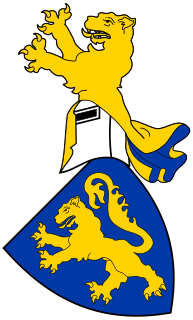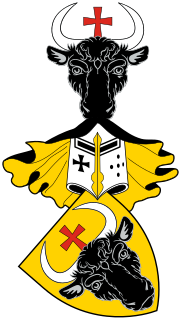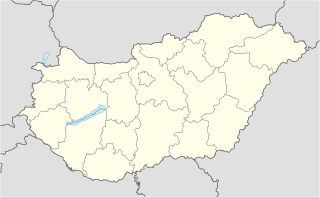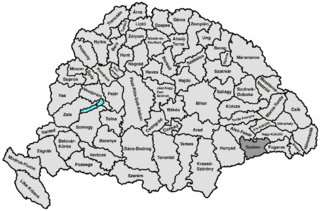
Csák was the name of a gens in the Kingdom of Hungary.

Rátót was the name of a gens in the Kingdom of Hungary. According to Simon of Kéza and other chroniclers, the ancestors of the clan were Italians from Caserta, Naples, by name Rathold and Oliver, who settled down in Hungary around 1097 during the reign of Coloman, King of Hungary. They came to Hungary alongside Felicia of Sicily.
Denis (II) from the kindred Türje or nicknamed Denis the Big-nosed was a powerful Hungarian baron and landowner, who held several secular positions during the reign of kings Andrew II and Béla IV. He was the most notable member of the gens Türje.

Matthew (II) from the kindred Csák was a powerful Hungarian baron, landowner and military leader, who held several secular positions during the reign of kings Béla IV, Stephen V and Ladislaus IV. He was the first notable member of the Trencsén branch of the gens ("clan") Csák. His nephew and heir was the oligarch Matthew III Csák, who, based on his uncles' acquisitions, became the de facto ruler of his domain independently of the king and usurped royal prerogatives on his territories.
Joachim Gutkeled was an influential lord in the Kingdom of Hungary. He was Ban of Slavonia between 1270 and 1272 and from 1276 to 1277, and three times Master of the treasury between 1272 and 1275. He was also ispán, or head, of many counties, including Baranya and Pozsony.

Ladislaus I from the kindred Kán was a powerful Hungarian baron, who held several secular positions during the reign of kings Andrew II and Béla IV.

Stephen (I) from the kindred Gutkeled was a Hungarian influential lord, an early prominent member of the gens Gutkeled and ancestor of its Majád branch. He governed the Duchy of Styria on behalf of claimants Duke Béla and Duke Stephen from 1254 until his death.
Monoszló was the name of a Slavonian-origin gens in the Kingdom of Hungary, several prominent secular dignitaries came from this kindred.

Hahót or Hahót–Buzád was the name of a gens in the Kingdom of Hungary, several prominent secular dignitaries came from this kindred. The last noble family, which originated from the kindred, became extinct in 1849.
Nicholas (III) from the kindred Hahót was a Hungarian noble and landowner, whose rebellion against the newly crowned Stephen V of Hungary in 1270 was a dress rehearsal for the era of feudal anarchy lasted until the 1320s, and also caused the 1271 war between Hungary and Bohemia.
Stephen (II) from the kindred Báncsa was a Hungarian prelate in the 13th century, who served as Archbishop of Kalocsa from 1266 until his death. He was a staunch supporter of Stephen V of Hungary.
Benedict was a Hungarian prelate in the second half of the 13th century, who served as Archbishop-elect of Esztergom from 1274 until his death. Previously, he held various posts in the royal chancellery.

Philip from the kindred Türje, also known as, albeit incorrectly, Philip of Szentgrót was a Hungarian prelate in the 13th century, who served as Bishop of Zagreb from 1247 or 1248 to 1262, and as Archbishop of Esztergom from 1262 until his death.
Oliver (I) from the kindred Rátót was a Hungarian nobleman in the 13th century.











